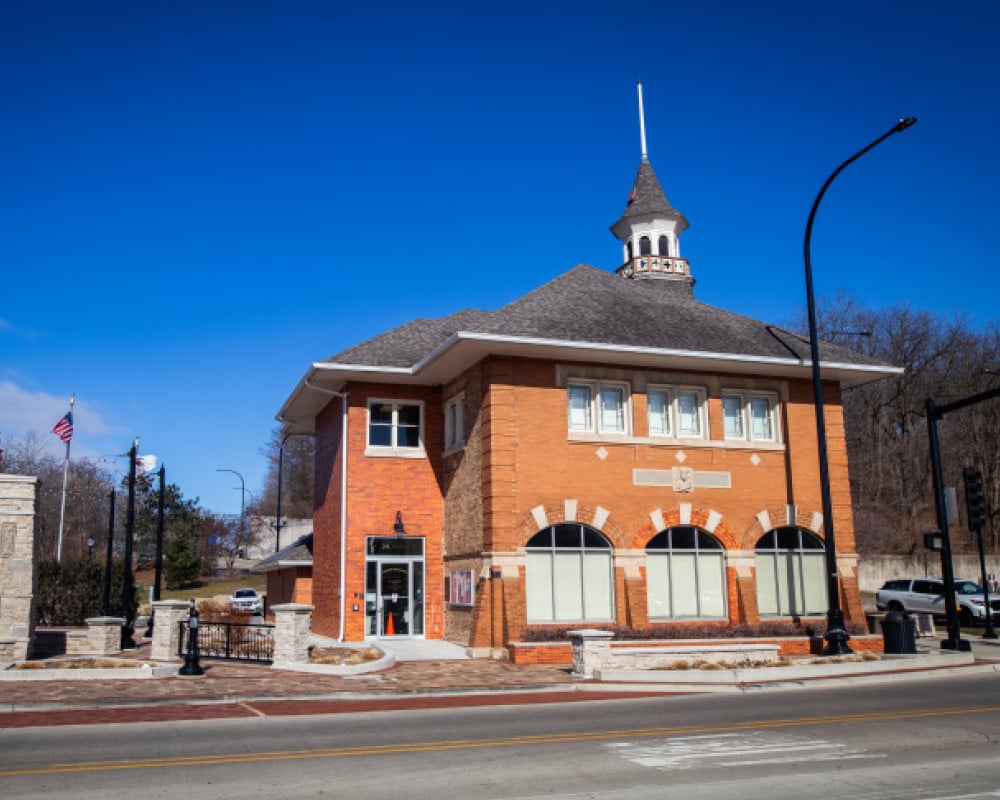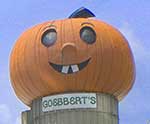Check out these destinations that reflect the genuine character of our region.

Gravesite of Maro the Great
North Cemetery, 1205 N. Fifth Ave., St. Charles
Walter Truman Best, born in 1868, emerged as a leading magician in the late 19th and early 20th centuries. He called himself Edward Maro, the Prince of Magic, and he captivated audiences with sleight-of-hand illusions, live music, and shadowgraphs of animals, faces and figures.
The traveling performer was in St. Charles when he met and fell in love with Allie Kaiser, the daughter of a local businessman. They married and made St. Charles their home.
Best died of typhoid fever in 1908 and was buried in St. Charles’ North Cemetery. To mark his final resting place, the eccentric magician requested two horse-drawn carriages carry a 3-ton, 6-foot-tall granite boulder from his childhood home in Leland, Mich.
The boulder eventually fell over and its nameplate was obscured for years until St. Charles magician Terry Evanswood, with the help of Driessen Construction Co. and his brother Mike, lifted and restored the boulder in 2010, 100 years after it was placed on Best’s grave.
The boulder now sits atop a triangular concrete base adorned with three stone rabbits.
Plaques on the front of the boulder honor Best and his wife, Allie, while two more on the back honor Allie’s parents, Augustus Kaiser and Lucy L. Whipple Campbell Kaiser.
Nearby lie three smaller stones marking the final resting spots of Best; his mother, Addie P. Best; and his wife, Allie Maro.

Algonquin Village Hall
2 S. Main St., Algonquin, (815) 923-2267
Samuel Gillian was the first settler in what’s now Algonquin when he arrived from Virginia in 1834. As others followed, they platted a town and dedicated a public square in 1846.
The village had roughly 550 residents when its leaders hired Elgin architect William W. Abel to design a dedicated Village Hall. Construction finished in 1907.
The 4,100-square-foot hall boasts a hipped roof and stone insets around its front windows. They reflect Frank Lloyd Wright’s Prairie Style while also echoing the great arches familiar to the Richardsonian Romanesque style.
The first floor housed the fire department, the marshal’s office, the jail and a sprinkling wagon for road maintenance. The council chamber, the clerk’s office and a records vault were located upstairs.
A village library was established on the second floor in 1921. Elementary school classes were held here from 1950 to 1951 to alleviate overcrowding at a nearby public school.
The Fire Department became the Algonquin-Lake in the Hills Fire Protection District in 1950 and relocated to a new station. The hall was renovated in 1967 and again in 1974 when 1,200 square feet were added to house the police department and jail.
The Public Square and the village hall, which were designated as county landmarks in 1993, currently house the Algonquin Historic Commission while also functioning as a community center and meeting space.
A new village hall was built in 1996 at 2200 Harnish Dr. to house the police department and administrative offices.

DeKalb County Civil War Memorial
133 W. State St., Sycamore
An estimated 2,391 DeKalb County residents enlisted in 14 military units during the Civil War. Their sacrifices were formally honored three decades later with a monument to honor all of the county’s veterans.
The 50-foot monument, dedicated in 1897, now stands in front of the DeKalb County Courthouse. At the top of this stone obelisk stands a Union soldier with a long coat and cap. He holds a sword in one hand and bears a flag in his other.
Toward the base of the monument, a pair of soldiers stand watch, each with a rifle in his hands.
Three sides of the marble base bear the names of major battles and campaigns in the Civil War, including Fredericksburg, Malvern Hill and Antietam, the latter of which is misspelled. The side that faces Illinois Route 64 (State Street) is engraved with an excerpt from President Abraham Lincoln’s address at Gettysburg.
More than 6,000 people turned out for the memorial’s dedication, which included an address by local commanders and a parade of veterans.
The pair of patina-green statues at the memorial’s base, which were once thought to be bronze, were found to be copper during a 2005 restoration project. They’ve also been the subject of routine vandalism, as their weapons have been stolen and replaced several times.
Sycamore’s local Sons of the Union Veterans of the Civil War chapter raised $10,000 to repair them in 2015 before the memorial was rededicated for the 150th anniversary of the Civil War’s end.



















































